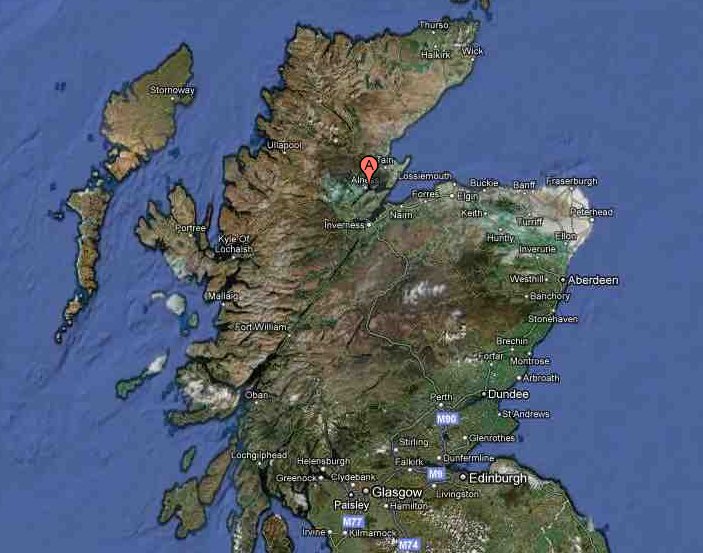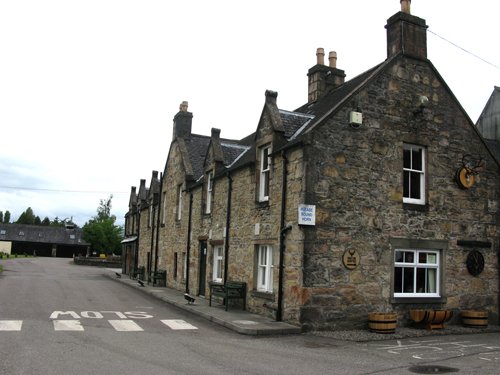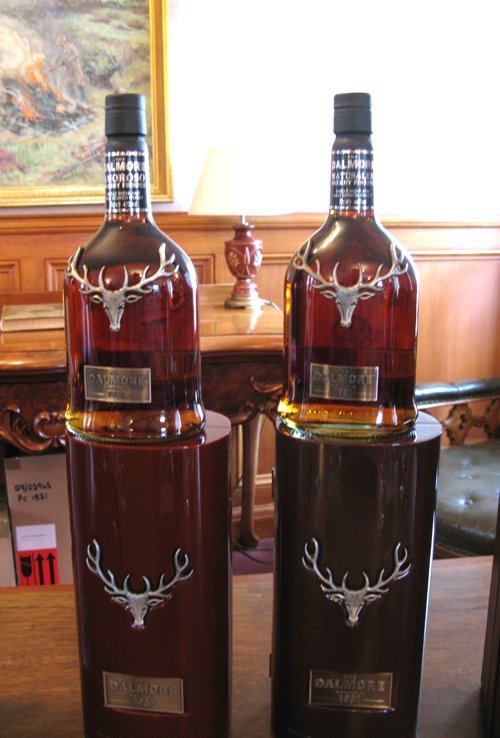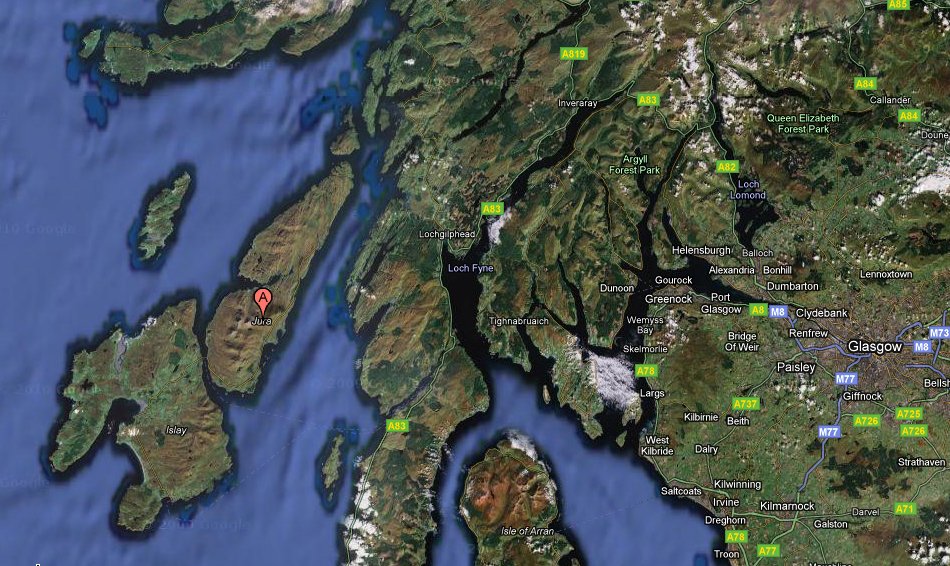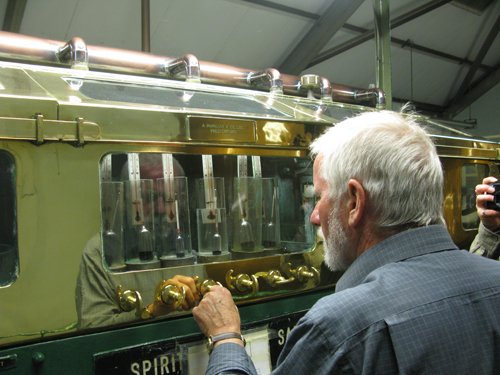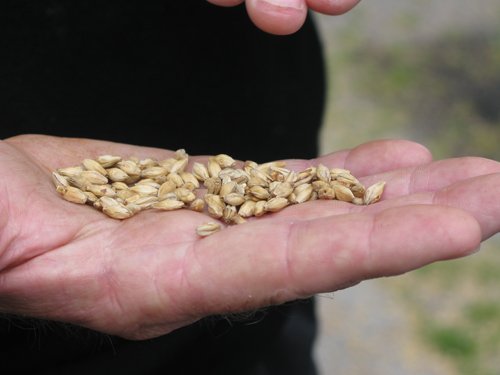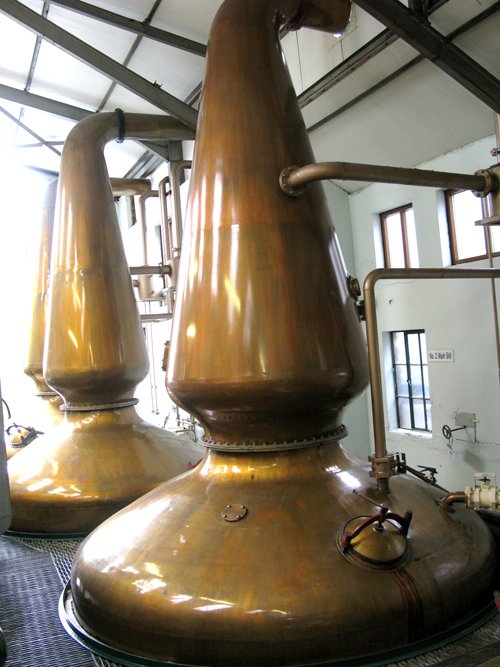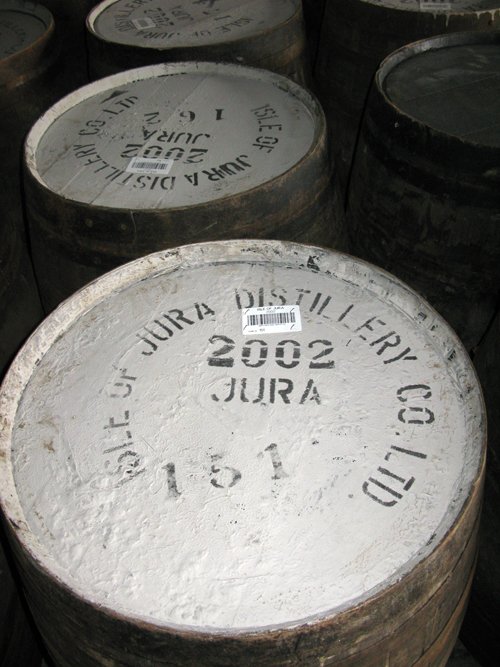Last week I visited the Isle of Jura, The Dalmore, and Fettercairn distilleries in Scotland. These brands are all owned by White & Mackay. This post is about visiting The Dalmore distillery.
(The Dalmore distillery indicated by red dot. Map from Google Maps.)
From Jura, we took a boat to the mainland and then drove diagonally northeast to reach The Dalmore. It was a long and gorgeous drive into the Highlands that took the better part of a day.
(The Dalmore distillery)
There are many things that make up the final flavor profile of a single-malt scotch, including the variety of barley, the peating levels of it, the water used in the mashing and fermentation, the size and shape of the stills, the size and type of barrels used to age it, where the barrels are aged, and of course the length of aging of the whisky.
The water for The Dalmore comes from Loch Morie, and inland lake. The water then runs through a river to the distillery that is located on another body of water, the Cromarty Firth. As the water travels through a whole lot of peat on the way, by the time it reaches the distillery it is brown in color. This water, not filtered, is used in the mashing and fermentation, and to dilute the whisky to barrel proof for aging.
You can see how it might add to the flavor of the whisky.
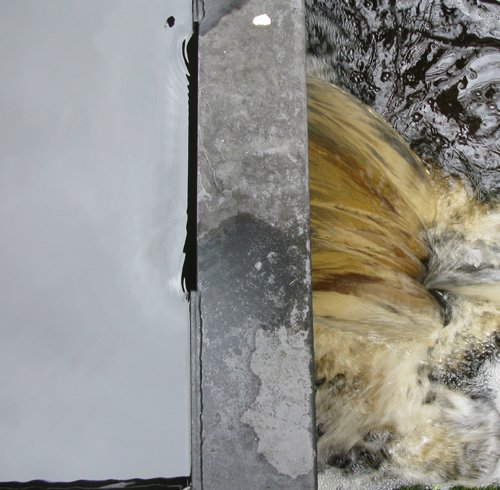
(Peat-filled brown water flowing into The Dalmore distillery.)
In the previous post I talked about Jura's tall stills that produce a light and fruity spirit full of high esther notes like pear. At The Dalmore the stills are quite differently shaped and this impacts the spirit.
Photography wasn't allowed in the still room so you'll have to make due with my artistic renderings below.
The stills for the first distillation almost look decapitated- they just stop with a flat top and the lynne arm is not a gentle curve from the top, but a tube sticking out from a foot or two below it.
(Artistic rendering of stills at The Dalmore. Not to scale.)
The still for the second distillation isn't quite as ugly, but it's even more interesting. I think this is the first time I've seen a water-filled reflux section on a still in Scotland. On the tubular pipe near the top of the still is a section that is rinsed with cool water inside.
This makes it difficult for light elements to reach the top of the still, leaving the more robust heavy molecules to cross over to the condenser. You get a spirit that's a lot less light and esthery, very much unlike Jura we'd visited the day before.
Thus The Dalmore comes off the still as a big bold heavy liquid before it goes into wood. It is then the job of the Master Blender, Richard Patterson in this case, to tame the spirit as it ages and shape it into the final product.
I thought that the role of the Master Blender was simply to take what was given to him- a bunch of scotch in barrels- and mix it together, but it is much more than that, at least at The Dalmore.
Patterson chooses the types of barrels (going to Jerez to pick out the sherry ones personally) in which the spirit will be aged, decides on the flavor profile he's seeking for a particular bottling, manages the aging process and checks up on the spirit to see how it is doing as it develops, and puts the blends together. It is product development, wood management, and blending.
Keep in mind that this is still just for a single-malt scotch whisky, a blend of whiskies from the same distillery. A vatted malt or a blend would involve whiskies from other distilleries and grain (column distilled) whisky also. Patterson does this for the Whyte & Mackay blended scotch whisky that is not available in the US.
On this trip I learned a great deal about the different roles of the master distiller and the master blender, and how some spirits need gentle nudging as they age to get them to the right final flavor profile, and others need an aggressive and more hands-on approach to bring them into line. Funny enough, the lighter, softer spirit is made on an island and the full-bodied bruiser comes from the Highlands.
